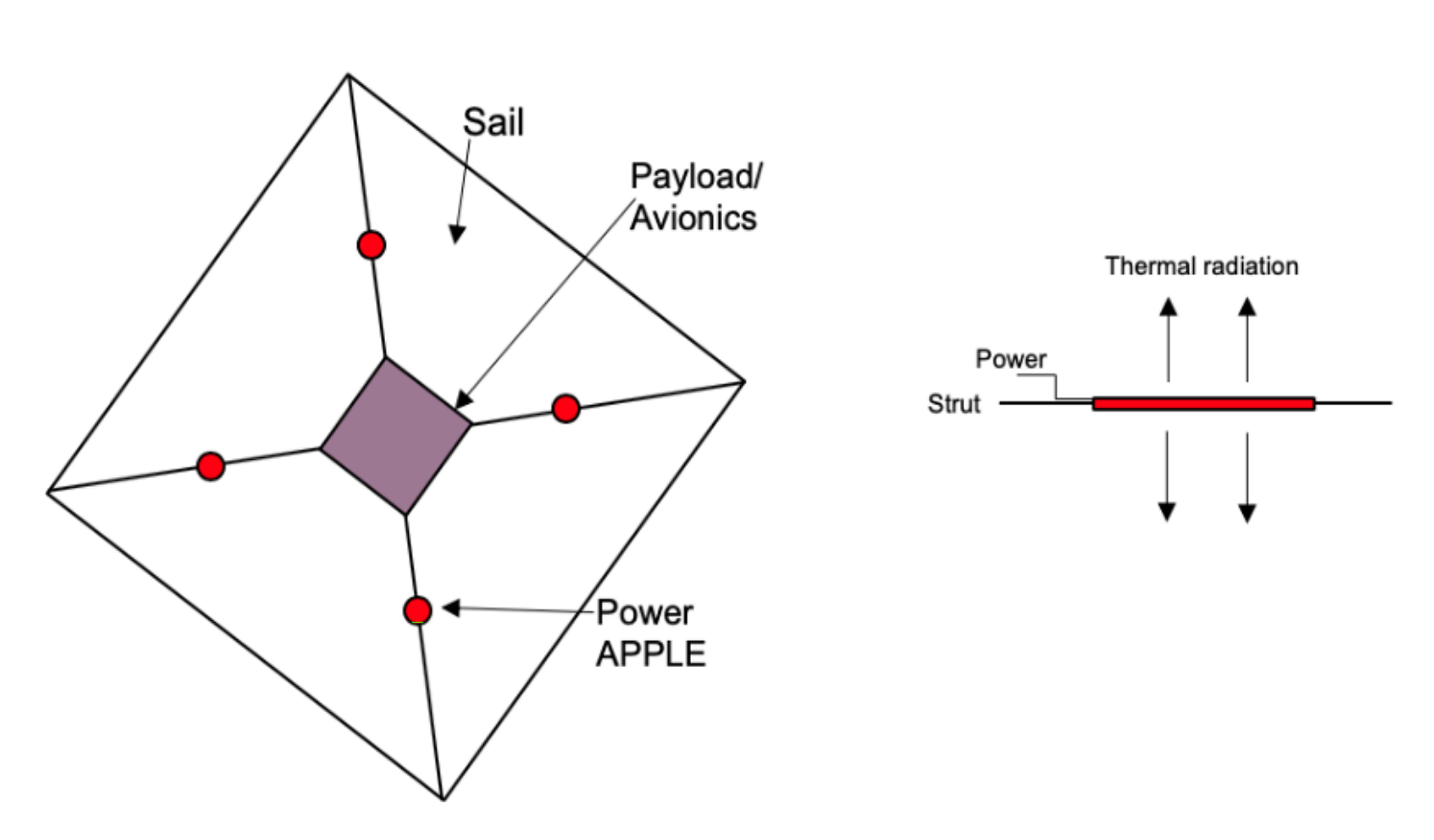E. Joseph Nemanick
The Aerospace Corporation
The Atomic Planar Power for Lightweight Exploration (APPLE) is an enabling architecture for deep solar system missions on low mass, fast transit space platforms. We explore an alternative vehicle architecture that integrates a long-lived, peak power capable, rechargeable, and modular power system with solar sail propulsion, and examine the new missions this architecture enables. New solar sail capability enables rapid missions to the far reaches of the Solar System (e.g. Jupiter vicinity 6 months; Saturn vicinity < 1 year, Pluto ~ 4 years). While solar sail propulsion is key to fast transit, the mission is enabled by the power system. APPLE comprises a durable radiation-hard battery that is integrated with a radioisotope electric power system to in a modular, planar form factor to power a solar sail vehicle. It is powered by a layered structure of radioisotope material backed with layers of solid-state, radiation-hard battery and thermal-to-electrical conversion technology. Analysis shows that replacing the Juno power system and propulsion with APPLE would reduce the power system mass by over 80% and transit time by 90%. The new radiation-hard battery being developed jointly between Oak Ridge National Labs (ORNL) and the Aerospace Corporation makes this architecture feasible. The power system uses the radiation-hard battery to enable close contact with the radioisotope source for waste heat utilization without impacting electrical conversion efficiency, while utilizing the large sail area to efficiently dissipate heat. Using thermal (heat distribution analysis), Monte Carlo (radiation deposition analysis) modeling with CAD (integration geometries) coupled with space power systems simulations, we will show the technical feasibility of the APPLE concept. We will explore launch safety compatibility by fabricating the radiation hard battery on MMRTG fuel cladding coupons at ORNL. We then will apply the APPLE concept to candidate missions (e.g. Pluto/moons) to ascertain mission advantages over a traditional deep space mission approach (e.g. New Horizon). The rapid transit times afforded by solar sail propulsion, enabled by APPLE will unleash many significant new deep space missions for science investigation which will inspire the public with images of worlds never seen.

































